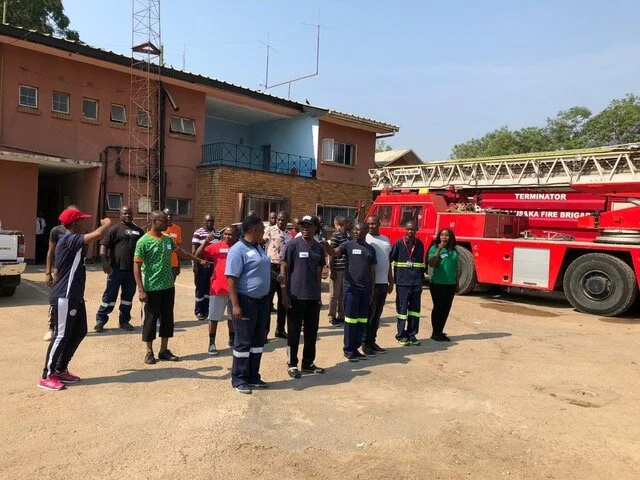By: Frank Montes de Oca
Recently, I focused a post on common traits that good leaders demonstrate. It listed characteristics common to leaders who strive to build strong, effective teams. To recap those traits are:
1. Recognize People
2. Respect Employees
3. Communicate Effectively
4. Possess Integrity
5. Provide Ongoing Feedback
Now, let’s aim attention on skills that leaders should incorporate in their continuing team building efforts. Assessing and Monitoring the Climate: How do you know your team is forming at an acceptable pace? How do you know when your team is ready to answer the challenges of delivering emergency services? If you’re not constantly assessing and determining individual and collective progress, you won’t. The steps below outline a basic approach to assessing team development and can be modified to meet the needs of the team and its members.
Step 1: Develop (or copy) a set of guidelines or standards that are achievable and measurable.
Step 2: Make sure the guidelines or standards are relevant to your team’s mission.
Step 3: Train team members individually and collectively to the standards.
Step 4: Assess members individually and the team as a whole.
Step 5: Share the team assessment outcome with all team members.
NOTE: Communicate throughout the process to ensure no one is left behind and a sense of ownership or buy-in is present throughout the team. Some departments are managed by standards, guidelines and rules developed by others outside the department or unit. Some might have been developed years ago. To ensure relevance, make sure the guidelines are up-to-date to meet the challenges of the community. Showing Trust in Your People. In the life safety business, it’s understandable to be cautious of taking everything on face value. It is human nature; somewhat of a self-preservation practice to question. There’s a saying that serves supervisors and team leaders well: Trust and verify. That is trust people or groups, but for the sake of safety, check every once in a while to make sure the facts are what they appear to be. Regardless of how you manage to certify the accuracy of the statement or claim, demonstrating trust, confidence in and support of your people is an integral practice for leaders. Ensuring a Respectful Workplace.
This attribute was mentioned in the last blog and is #2 above. This takes it a step further by requiring all members to demonstrate respect for each other and every community member with whom they interact. Regardless of gender, age or personal beliefs, it is integral to an effective team that respect is practiced at all levels. Enforcing Accountability and Fairness
Providing emergency services requires a relationship between the responder, his/her supervisor and the citizens served. To ensure the service rendered is of the quality expected, all members must be accountable for their actions. To achieve this the unit leader holds himself/herself to the established standards and in turn holds all members accountable for their actions as well. The peak of the team’s development occurs when team members hold each other accountable. Duties should be assigned based on fairness and the individual abilities of those assigned. As soon as favoritism is witnessed or suspected, a breakdown in unit cohesiveness occurs. Therefore, to prevent this all assignments, assessments and training must be distributed equally and fairly.
Communicating, Managing and Sharing Expectations The underlying message in this post is communication. When managers and supervisors maintain an open, two-way communication loop, unit effectiveness thrives. Members want to know what is expected of them. And in turn they expect their supervisors to know and respect what they expect. This level of honesty and openness builds teams who operate with resiliency, pride and effectiveness.
Go forth and lead!
Frank Montes de Oca served as a firefighter/paramedic for over 38 years finishing his career as a fire chief and emergency services director at three departments. His focus continues to be first responder development, team building and firefighter safety and survival. Chief Montes de Oca can be reached at frm1@me.com. Visit his website www.responder1.org to find information and training programs focused on first responder safety, survival and leadership development.








